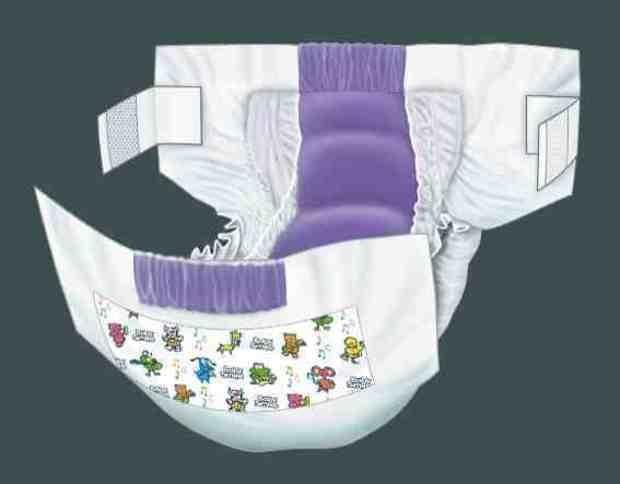Adult Diaper Market Overview: Key Growth Drivers, Industry Challenges, and Emerging Global Opportunities Ahead

The global adult diaper market has witnessed significant growth over the past decade, fueled by a combination of demographic trends, evolving social attitudes, product innovation, and increasing awareness about personal hygiene. As populations age and healthcare improves, the demand for adult incontinence products has surged, transforming what was once considered a niche segment into a vital part of the global personal care industry.
Market Size and Growth
According to various market research reports, the global adult diaper market was valued at over USD 15 billion in 2023 and is projected to grow at a compound annual growth rate (CAGR) of 7–8% through 2030. This robust growth can be attributed to a variety of factors, including the aging population, greater acceptance of adult incontinence products, and a growing demand for high-quality and discreet solutions.
North America and Europe currently dominate the adult diaper market, accounting for a significant share of global revenue. However, the Asia-Pacific region is expected to experience the fastest growth due to increasing life expectancy, rising healthcare standards, and growing awareness in countries such as China, India, and Japan.
Key Drivers
-
Aging Population: One of the most significant drivers of the adult diaper market is the rapidly aging global population. According to the World Health Organization (WHO), the number of people aged 60 years and older is expected to double by 2050, reaching nearly 2.1 billion. With age comes a higher incidence of medical conditions such as incontinence, driving demand for adult diaper products.
-
Rising Awareness and Social Acceptance: Stigma around incontinence is slowly diminishing due to educational campaigns, healthcare advocacy, and improved media representation. This shift has encouraged more individuals to seek out incontinence products without embarrassment, further expanding the market.
-
Technological Advancements and Product Innovation: Modern adult diapers have evolved significantly from earlier versions. Today’s products offer improved absorbency, odor control, comfort, skin-friendliness, and discretion. Manufacturers are investing in R&D to create thinner, more efficient products that cater to active lifestyles, contributing to increased consumer adoption.
-
Healthcare Infrastructure and Institutional Demand: Hospitals, nursing homes, and other healthcare facilities are major consumers of adult diapers. As global healthcare systems expand and become more sophisticated, the demand for high-quality adult incontinence products in these settings continues to grow.
Market Segmentation
The adult diaper market can be segmented by product type, distribution channel, and end user.
-
By Product Type:
-
Pant-style diapers: These are pull-up diapers that resemble regular underwear and are popular among active users for their convenience and comfort.
-
Pad-style diapers: Often used in combination with regular underwear or briefs, these offer targeted absorption and are ideal for lighter incontinence.
-
Tape-style diapers: Featuring adjustable tabs, these are commonly used by bedridden or immobile individuals and caregivers for ease of changing.
-
-
By Distribution Channel:
-
Pharmacies and drug stores
-
Supermarkets and hypermarkets
-
Online retail
-
Hospital and institutional supply channels
-
Online retail is witnessing particularly fast growth, supported by the convenience of home delivery and the increasing comfort of consumers with digital shopping.
-
By End User:
-
Elderly
-
Adults with physical or mental disabilities
-
Post-operative patients
-
Women with postpartum incontinence
-
Challenges and Restraints
Despite the overall positive outlook, the adult diaper market faces certain challenges. Social stigma and cultural taboos, particularly in developing regions, continue to act as barriers to widespread adoption. Additionally, the cost of premium products can be prohibitive for low-income individuals and healthcare providers, limiting market penetration.
Environmental concerns are also gaining attention, as disposable diapers contribute to landfill waste. This has prompted interest in biodegradable and reusable alternatives, which may gain more traction in the years ahead as sustainability becomes a key focus for both consumers and manufacturers.
Competitive Landscape
The market is moderately consolidated, with major players such as Kimberly-Clark Corporation, Procter & Gamble, Essity AB, Unicharm Corporation, and Ontex Group dominating global sales. These companies compete based on product innovation, brand strength, pricing strategies, and distribution networks. Emerging players and regional brands are also entering the market, particularly in developing economies, offering competitive pricing and localized products.
Future Outlook
Looking ahead, the adult diaper market is poised for sustained growth driven by demographic shifts, increasing healthcare needs, and continued innovation. With the global focus shifting towards inclusive, dignified healthcare and hygiene solutions, adult diapers will continue to play a crucial role in improving quality of life for millions of people around the world.
Manufacturers that prioritize sustainability, comfort, and accessibility—while breaking down social barriers—will be well-positioned to capture new market opportunities and lead the next wave of growth in this evolving industry.
- Art
- Causes
- Crafts
- Dance
- Drinks
- Film
- Fitness
- Food
- Games
- Gardening
- Health
- Home
- Literature
- Music
- Networking
- Other
- Party
- Religion
- Shopping
- Sports
- Theater
- Wellness


